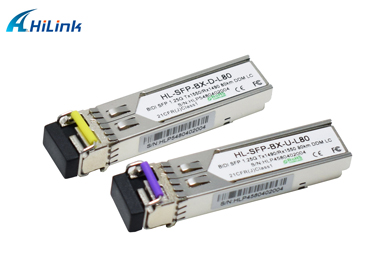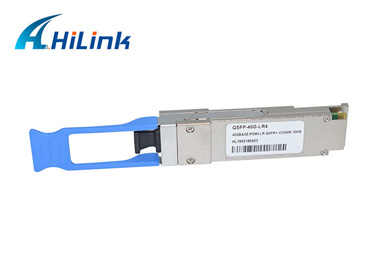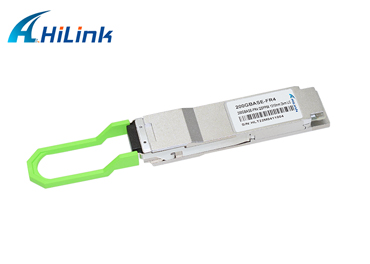How Do You Deal with SFP+ Compatibility Issues?
Jan. 13, 2023
Have you ever tried to plug a fiber optic SFP+ transceiver into an SFP+ port only to find that the connection doesn't work, i.e., traffic is very slow or no data is transmitted at all? Have you managed to diagnose the problem and find a solution? There are several possible reasons for the failure. We have listed the five most common ones.
First, let's briefly review what SFP and SFP+ stand for. SFP - short for "Small Form Factor Pluggable" - is a compact hot-swappable device that connects network devices such as switches, routers, and servers.
In this article, we'll focus on so-called optical transceivers, which deliver 1 Gbps of data over single-mode or multimode fiber, and SFP+, an enhanced version of SFP that supports data rates of up to 10 Gbps. Now, when troubleshooting, the difference between SFP and SFP+ is important: Transceivers are not always interchangeable.
1.25G BIDI SFP 80KM
Tip 1: Check whether you are using SFP or SFP+ transceivers and slots
SFP and SFP+ modules look exactly the same. Because they have the same dimensions, your SFP transceiver will fit seamlessly into the SFP+ switch port, and vice versa. However, the connection will not work as you expect. Or, worse, it won't work at all. If you plug an SFP device into an SFP+ port, the speed will be locked at 1 Gbps. plugging an SFP+ module into an SFP port will not produce any results at all, because the 10G transceiver will never be able to auto-negotiate to 1 Gbps.
Tip 2: Make sure the SFP has the same wavelength at both ends
Data transfer means that data is sent from one end to the other. The SFP+ transceiver at one end converts the electrical signal to an optical signal. A built-in laser transmits the light through the fiber to the other side. Here, an optical diode converts the light back into an electrical signal. To ensure that the SFP+ at the other end can do this, the SFPs at both ends should support the same wavelength. For example, a 1310nm transceiver will not communicate with an 850nm transceiver.
40G QSFP LR4 Optical Transceiver
→ Here, you can also check the specifications on the module label or check the manufacturer's website for more information. Don't look directly at the laser! If you want to verify that light is coming from the cable, use your smartphone camera.
Tip 3: Use the correct singlemode or multimode fiber optic cable
Even if you're sure there's no confusion between SFP and SFP+ and that both support the same wavelength, are you still having trouble? If so, verify that each end of the optical transceiver uses the same fiber type, i.e., for single mode or multimode fiber. And use the appropriate fiber optic cable.
Single-mode fiber (SMF): With a narrow core (typically about 9μm), SMF allows only single-mode (or "ray") light to travel. It is mainly used for data transmission over long distances (up to 2 km - 120 km).
Multimode fiber (MMF): Because MMF has a wider core (typically 50μm or 62.5μm), it allows for multiple modes of light propagation. Common MMFs are used for short-distance transmission (up to 100m - 500m)
200G 2KM QSFP56 FR4
Tip 4: Are both ports compatible with your SFP+ modules?
Even if you are using compatible SFP+ on both ends of the correct cable, it is critical that both of your devices support SFP+. Make sure that the SFP+ port on your device is compatible with the SFP+ module you want to use. Some brands will only allow you to use their own modules.
Tip 5: Is your fiber optic cable in good condition?
Fiber optic cables are very delicate. Dust, dirt, or tampering can cause physical damage. Therefore, if you experience problems connecting your equipment, check the connectors, modules, and module slots to make sure they are not damaged.
To avoid physical damage, avoid excessive bending of fiber optic cables when storing them, and cover the end of the cable with a dust cap when disconnecting them.
In short, make sure you know what you're doing when plugging in SFP+ modules and fiber optic cables! It may seem simple, but transceivers and slots are not always compatible. Always check the specifications on the transceiver/slot label, or verify the details on the manufacturer's website. Only by doing it right and using fiber optic cable in good shape will you be able to transmit data at the speed you need!
For any further information, please visit https://www.hilinktech.com or contact us directly via info@hilinktech.com.















